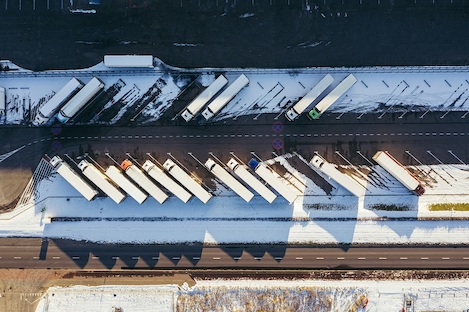The industrial sector faced a challenging year in 2023, marked by sluggish growth attributed to various obstacles such as elevated interest rates, inflationary pressure and reduced sales and leasing volumes, according to the fourth quarter 2023 JLL industrial outlook.
According to data released by JLL, net absorption in the U.S. industrial sector remained largely unchanged in the fourth quarter from the previous quarter, standing at 44.1 million square feet by the end of 2023. This brought the year-to-date net absorption figure to 214.8 million square feet.
Markets traditionally known for robust absorption figures, such as Atlanta and New Jersey, experienced reduced or negative absorption in the fourth quarter, according to JLL. Factors contributing to this downturn included deferred occupancy plans in new deliveries and occupiers opting for more cost-effective markets.
While the historical quarterly net absorption high of 141.7 million square feet recorded in the fourth quarter of 2021 remains unmatched, analysts emphasize that the current absorption levels indicate only a slight decline compared to pre-COVID levels, which averaged around 59 million square feet quarterly.
Over the past five years, just more than 2 billion square feet of new industrial space has been delivered in the country, with 593.5 million square feet added during the pandemic, contributing to a 3.8% increase in total industrial inventory in 2023.
With the influx of new deliveries, vacancy rates saw an uptick of 230 basis points from the previous year, settling at 5.7% by the end of 2023. Similarly, new industrial construction starts continued to decline in he fourth quarter of last year, with only 407.6 million square feet currently under construction. Factors such as the cost of capital, inflated land prices and fluctuating material costs have contributed to this slowdown in construction activity.
Despite the challenges, leasing volume experienced a 14.8% increase from the previous quarter, reaching 105.7 million square feet. Rental rate growth, however, saw only a modest 1.6% increase quarter-over-quarter, although the year-over-year increase measured 12.3%, elevated from pre-pandemic averages. Occupiers remained cautious in finalizing new lease agreements, prolonging the decision-making process.
Looking ahead to 2024, JLL analysts anticipate a positive outlook with an expected increase in activity driven by pent-up demand from occupiers who delayed new deals over the past year. New deliveries surged 14.8% year-over-year, reaching a new high of 171.8 million square feet. The top five markets for deliveries in 2023 were Dallas/Fort Worth, Houston, Eastern & Central Pennsylvania, Savannah and Chicago, collectively delivering 187.6 million square feet.
Despite the challenges, there were some bright spots in the industrial landscape. The preleasing rate on new deliveries rebounded slightly with a 3.4% quarter-over-quarter increase to 33.8%. Manufacturing projects, in particular, saw a significant uptick, now accounting for 10.5% of the total square footage under development.
The Savannah, Phoenix, and Austin markets emerged as hubs for large-scale EV and chip manufacturing endeavors, with manufacturing sites recording a 74.8% increase in square footage under development compared to the previous year.
Looking forward, JLL analysts predict that new construction starts will be driven not only by the nearshoring trend affecting manufacturers and their supply chains but also by the need to replace aging industrial buildings with more efficient ones. Locations capable of providing heavy power and water are expected to be in high demand as manufacturing activity continues to progress.




